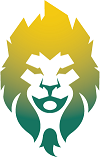Stretching the back (using a fixed bar)
Anatomically speaking, the back (or dorsal spine) is the part of the body that consists of the twelve dorsal vertebrae, muscles (especially large dorsal and long dorsal muscles), tendons and ligaments that bind them together, and the posterior part of the ribs. The back is a very large and powerful area of the body, but it is quite often subject to pain (back pain).
Technical sheet on stretching the back (using a fixed bar):
Stand upright (feet hip width) facing a fixed bar (mid-high), make sure you are about one step away. Place your hands (shoulder width) on the bar and bend your knees slightly so that your chest bends forward naturally. In this posture, make sure to keep your stomach in, back straight and head in line with your body. Push on the buttocks to accentuate the stretching of the back.
To do a good stretch, you will have to respect these rules:
Remember to breathe continuously ( Deep breathing cycle of inhalation and exhalation)
Never block your breathing when stretching.
Do your stretching for at least 30 seconds
Stretching will always be done gradually. So that your muscles can get used to this type of work.
Stretched muscles:
Main muscles: Large dorsal, lumbar, spinal,
Secondary muscles: Trapezius
Role of the back:
Support and protection role. The spine gives the back a role in supporting the head and protecting the spinal cord.
Role in mobility and posture. All the components of the back preserve the posture of the trunk and thus maintain the standing position. The structure of the back allows many movements such as trunk twisting, trunk bending or pulling movements.
Possible back pathology:
Back pain is defined as localized pain that most often originates in the spine and usually affects the surrounding muscle groups. Depending on their origin, three main forms are distinguished: neck pain, back pain and low back pain.
Sciatica, characterized by pain starting from the lower back and extending into the leg. They are frequent and are due to compression of the sciatic nerve. Different pathologies can be at the origin of these pains.
Different pathologies can lead to the progressive degradation of cellular elements. Osteoarthritis is characterized by wear and tear of the cartilage protecting the bones of the joints. Disc herniation is the expulsion of the intervertebral disc from the back of the nucleus by wear and tear. This can result in compression of the spinal cord or sciatic nerve.
Different deformations of the column may appear. Scoliosis is a lateral displacement of the spine. Kyphosis develops with excessive back curvature at shoulder height, while lordosis is associated with increased lumbar arch.
Lumbago and stiff neck. These pathologies are due to deformities or tears in the ligaments or muscles, located respectively in the lumbar region or in the cervical region.

